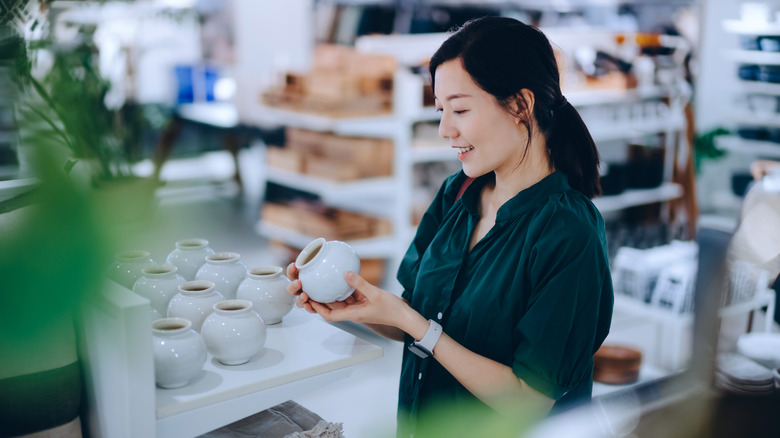Fluid Patterns Are Making A Trendy Return To 2025
A common theme in 2025 design trends is bringing the outdoors in, with earthy tones and organic materials and form rising in popularity — offering the perfect opportunity for fluid patterns to make their trendy return. Fluid patterns in home design can encompass a wide range of styles like organic shapes, soft curves, and flowing transitions between rooms. At the core, fluid patterns are best defined as repeating, organic shapes and lines that create movement and harmony. They help to make your space feel connected with itself as well as nature, for a more comforting and grounded atmosphere. Professional designers are seeing the value of this comeback in modern design as an easy-going shift away from stark lines and conformity and into a more welcoming and beautiful aesthetic.
Recent home design trends like the organic modern aesthetic prioritize wellness, and as a result, we're seeing a rise in softer forms that elevate a sense of relaxation and comfort. This doesn't mean that straight lines or sharp edges are off-limits. It's less about adding fluid patterns everywhere and focuses more on thoughtfully using repetitive, fluid elements to ease any stiffness. Whether you decorate your interior with curved furniture, fluid flooring, or organic décor, there are endless ways to embrace this trend for a more inviting and trendy appeal.
How to use fluid patterns in your home design
If you're wondering where fluid patterns are making a trendy return from, they're best known from their previous acclaim in mid-century modern design. From mid-century modern architecture to post-war fashion and culture, a sense of fluidity has always been a crucial aspect of this vintage style. For instance, mid-century interiors often incorporated open floor plans to bring a fluid, dreamy flow in between rooms. That said, an open-concept isn't a must-have to enjoy this trend. Arches between doorways, curvy alcoves, and soft, continuous transitions are an effective way to introduce fluidity and make your space feel more open. Fluid patterns also go hand-in-hand with functional furniture, as you can achieve them by shaping your layout to mirror the natural flow of daily life to create a thoughtful and accessible environment.
Another way to enjoy the benefits of fluid patterns is to consider flooring with wavy aligned designs, or using organic materials like marble that have a naturally fluid pattern. You can even apply this same approach to décor like wallpaper and artwork, aiming for pieces with continuous, natural shapes that draw the eye around. When mixing fluid patterns with others, aim for balance and contrast by pairing them with structured designs like stripes or geometric accents to maintain a visual harmony. If there are aspects of your current décor that feel too stark and uniform, that could be a clue as to where fluid patterns will do their best work.
